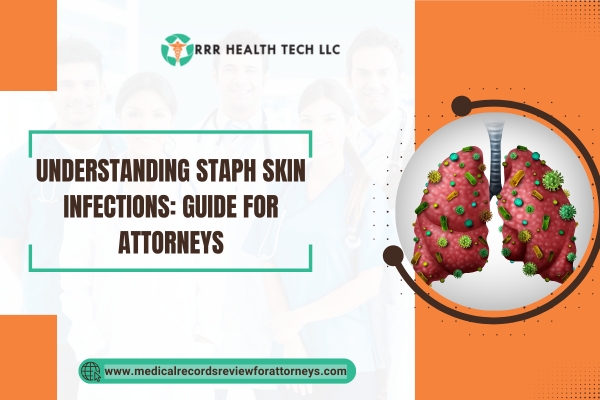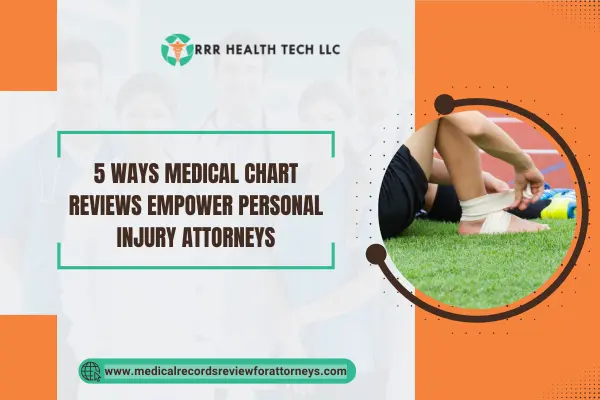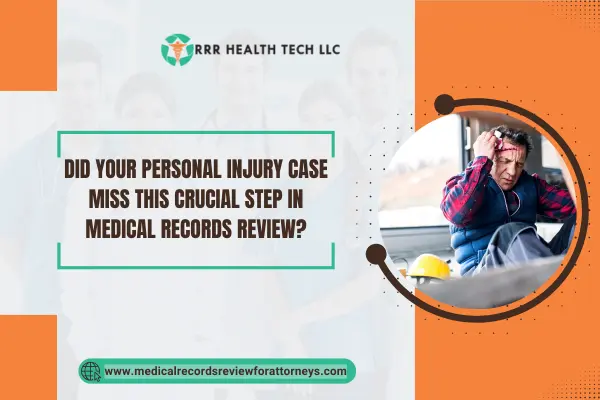
Introduction
Staphylococcus aureus, often referred to as staph, is a strain of bacteria that commonly colonizes the skin and nasal cavities of healthy humans. Although there are many staph carriers who remain asymptomatic, the bacterium can be quite virulent and can cause skin infections by penetrating the body through abrasions or cuts. For lawyers, especially in cases of medical malpractice, it is necessary to grasp the medical detail and legal aspects that accompany staph skin infections. This article attempts to focus on the origins, the signs and symptoms, as well as legal suits arising from staph infections with particular attention to the application of medical record reviews in legal cases.
What is a Staph Skin Infection?
A staph skin infection is described as an inflammatory response that occurs due to the invasion of the skin with the staphylococcus bacteria and can elicit a spectrum of conditions from simple to complicate. These include impetigo, cellulitis, boils and many others. Such infections have a specific nature and lawyers who handle cases of negligence and malpractice as a result of wrongful diagnosis or faulty therapeutic procedures will benefit from appreciating such nature of these infections.
Types of Staph Skin Infections
- Boils: Painful, pus-filled bumps that form under the skin.
- Impetigo: A highly contagious skin infection that often affects infants and children.
- Cellulitis: A deeper skin infection that can spread rapidly and may require hospitalization.
- Folliculitis: Infection of hair follicles, often resulting in red, pimple-like bumps.
Symptoms of Staph Infection
Recognizing the symptoms of a staph skin infection is vital for timely treatment. Common symptoms include:
• Redness and Red brown discoloration. The areas that are infected may be red and swollen.
• Pain and tenderness. The infected site generally is also painful when touched.
• Pus or other discrete fluids. The presence of pus or any other fluid may be a sign of infection.
• A systemic disease, such as a fever. Symptoms such as fever may follow but this indicates a serious infection.
Early Detection and Treatment
Appropriate medical intervention needs to be sought as soon as possible to avoid any complications. Legal cases revolve around whether appropriate care was provided and where there was reasonable time for provision of care.
Causes of Staph Skin Infection
Staph infections can arise from various sources, including:
- Direct Contact: Body contact through hugging or kissing an infected person.
- Surface Transmission: Due to the durability of bacteria in surfaces, infection may occur through cuts and or scratches.
- Infection through Weakened Immune System: The risk is also greater for those with weakened immune systems due to illness or childhood.
- Exceeding Chronic Illness: Staph infection can also occur in cases of eczema and conditions that may increase the chances of developing staph.
Staph Skin Infection Lawsuit: Legal Implications
In certain cases, healthcare service providers may be liable for medical negligence where they fail to diagnose or treat a staph infection appropriately. There are a number of legal matters that lawyers should be concerned with.
Grounds for a Staph Infection Lawsuit
- Failure to diagnose: If a healthcare provider overlooks symptoms of a staph infection, leading to complications.
- Substandard treatment: The patient is subject to suffering because the treatment provided is professionally inadequate.
- Untimely treatment: Not acting in time can have life threatening situations for the patient.
Case Study 1: Failure to Diagnose Staph Infection
Overview of the Case
A 35 year old male reported to the A&E with a painful lump in his arm, which was initially thought to be a cyst but later turned out to be a major staph infection.
Challenges:
They received a med port to insert, but the medical staff did not perform appropriate diagnostic workup and the patient remained undiagnosed for his staph infection.
Solutions:
After babysitting symptoms for a week, the second opinion of a different doctor was sought who made the right diagnosis encouraging immediate intervention.
Compensation:
The patient has been compensated for his medical costs and for the pain and suffering along with loss of earnings caused by the appreciative hold up over the diagnosis.
Case Study 2: Inadequate Treatment of Staph Infection
Overview of the Case:
A 50-year-old lady with diabetes was operated upon and developed a staph infection but was given ineffective antibiotics.
Challenges:
Subsequently, the infection deteriorated to the extent that the patient was admitted and had to undergo another operation.
Solutions:
The incident calls for a scrutiny of the patient’s medical documents seeking compliance to the guidelines in the treatment provided to the patient.
Compensation:
The complainant was given compensation for the extra expenses on medicine and medical treatment and for future health complications arising from the wrongful treatment.
The Importance of Expert Analysis in Staph Infection Cases
In staph infection lawsuits, expert analysis is crucial in establishing the standard of care and determining whether healthcare providers breached that standard. Medical experts can:
- Provide Contextual Insight: Provide insights into the staph infection and its treatment from the perspective of the medical professionals.
- Evaluate Treatment Options: Analyse why a particular course of action was taken and suggest whether alternate treatment modalities would have been more effective.
- Establish Causation: Assist the attorneys in establishing relationships between the injuries sustained by the plaintiff and the actions or failures of the defendant.
Conclusion
The potential consequences of staph skin infections can be worse when they are ignored or not correctly diagnosed and treated by healthcare providers. Attorneys must be familiar with the etiology, clinical presentation, and legal aspects of staphylococcal infections; it, in turn, helps them handle and manage these cases more comprehensively. Comprehensive evaluation of medical documents and medical forensic examination is the cornerstone of establishing a robust case, as these two elements will enable the attorney to ensure that justice is delivered to his clients.


